Visitors to Long Lake are frequently welcomed by ducks. The easiest place to see the ducks and visit with them is at Duck Cove near Old Sambro Road close to the end of Dunbrack Street. The ducks are used to people and often swim over hoping for a treat. Food is a strong motivator. It is easy to see that more than one type of duck is present, but what are they?
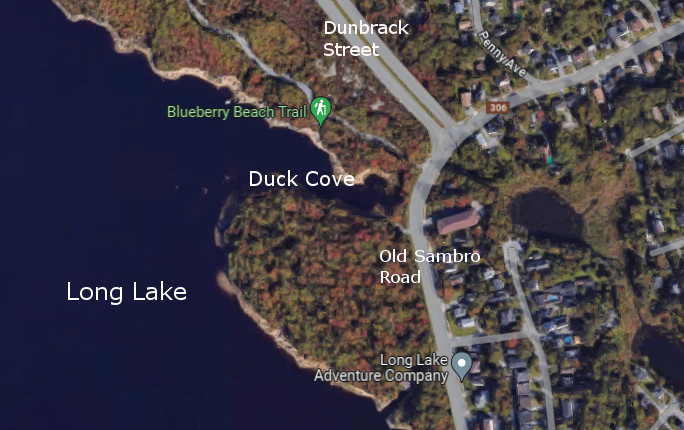
Black Duck
Not long ago most of the ducks at Long Lake were American Black Ducks (Anas rubripes). This is the classic wild duck of Nova Scotia. It is very well adapted to the climate and natural environment of Nova Scotia and is able to survive in the province throughout the year, often migrating to open water at the seashore when conditions inland are harsh. Nevertheless, some of our ducks migrate further south during winter to find easier living conditions, while tough individuals from further north will take up temporary residence in Nova Scotia for the winter and return as far north as northern Labrador for the summer.
Black Ducks have strong fidelity to their home sites, so it is likely that a duck you meet this week will be the same duck as last week, and the same duck the following year.
Male and female black ducks are very similar in appearance except for their beaks. Adult males have yellow-green beaks while the female beak is relatively dull.
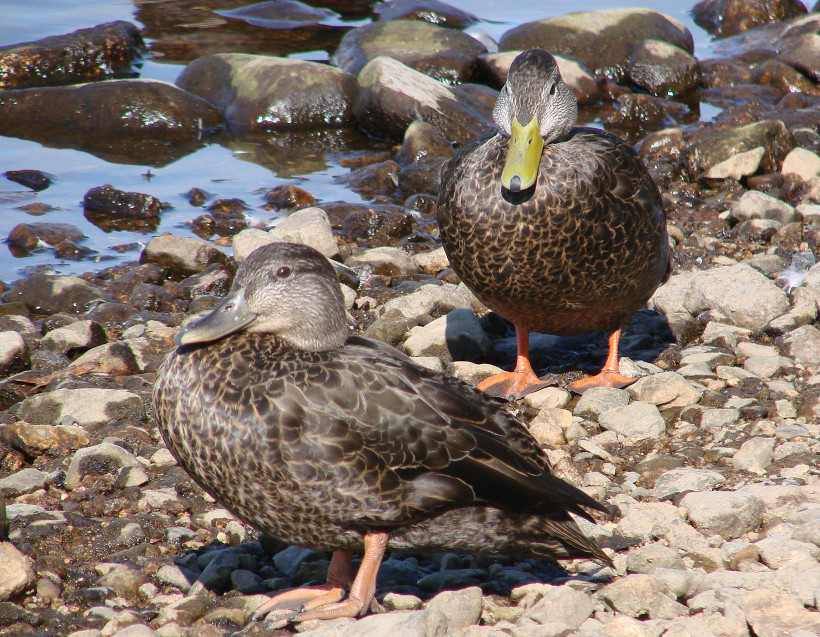
Mallard
The Mallard (Anas platyrhynchos) is closely related to the Black Duck but is more widely distributed in the world, being found in most parts of North America, Europe and Asia. Almost all types of domestic ducks are derived from Mallards in much the same way that domestic dogs trace back to wolves.
Mallards have become more frequent at Duck Cove in recent years and this probably indicates a subtle change in environmental conditions. Mallards are not as tough as Black Ducks when faced by winter conditions and Long Lake freezes over later now than it did in the past. Also, Mallards have a special fondness for handouts from humans and more people visit Long Lake now than in the past.
It is easier to see the difference between the sexes of Mallards than Black Ducks because the male is relatively showy with its green head and white collar.
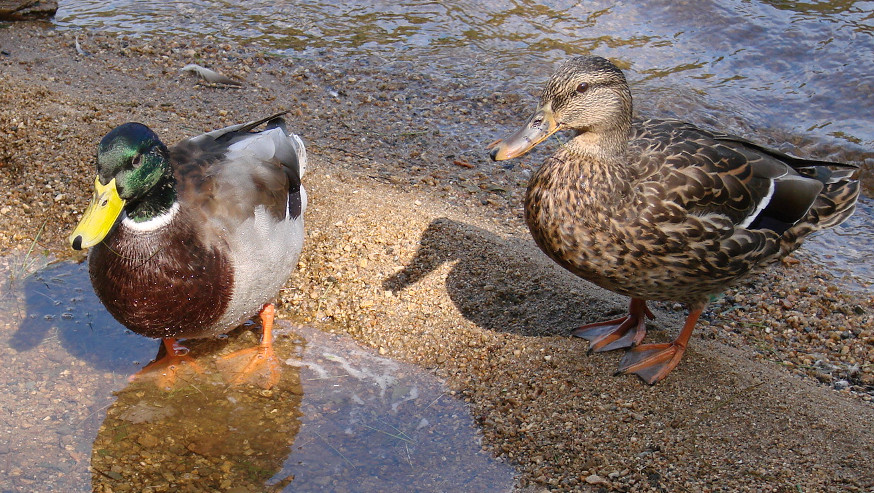
Hybrids between Black Duck and Mallard
Visitors to Duck Cove who are interested in the ducks will face a problem that requires careful observation. Mallards and Black Ducks hybridize and their offspring are fully capable of breeding, so there are often individuals who are in-betweens. The trick in identifying these is to look for the blue patch on the wing known as “secondary feathers” or “speculum”. Black Ducks have a blue speculum surrounded by black feathers, while Mallards have thin white bands next to the blue feathers.
When light catches the speculum at the correct angle, the color is brilliantly iridescent!
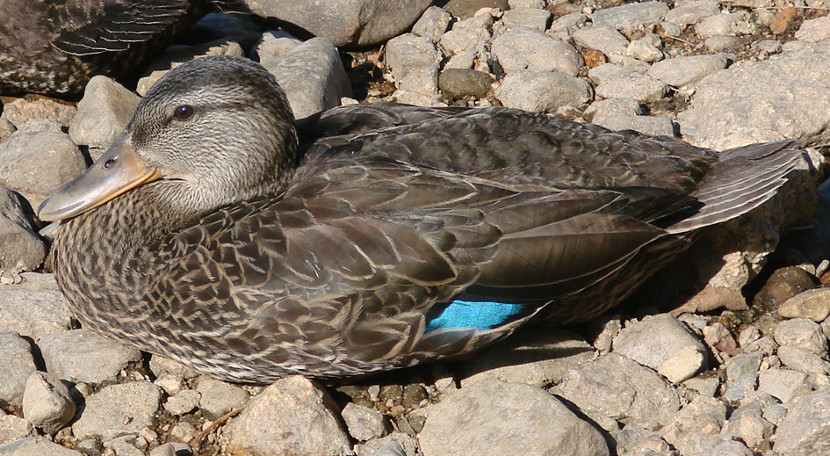
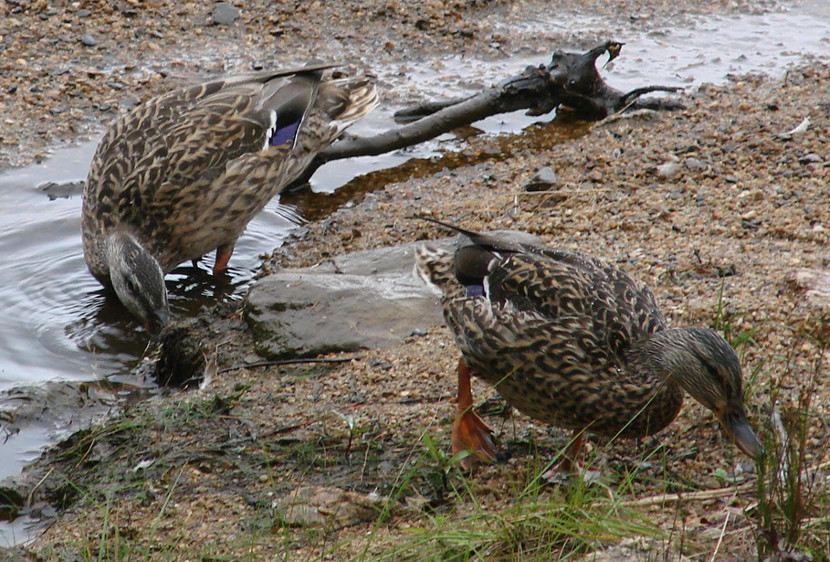
The differences are made even more complicated when juveniles are around because it takes a while for the full range of adult characteristics to show up as the birds grow larger. So if you find it difficult to sort one type of duck from another, don’t worry, it really is difficult to tell these two species apart!
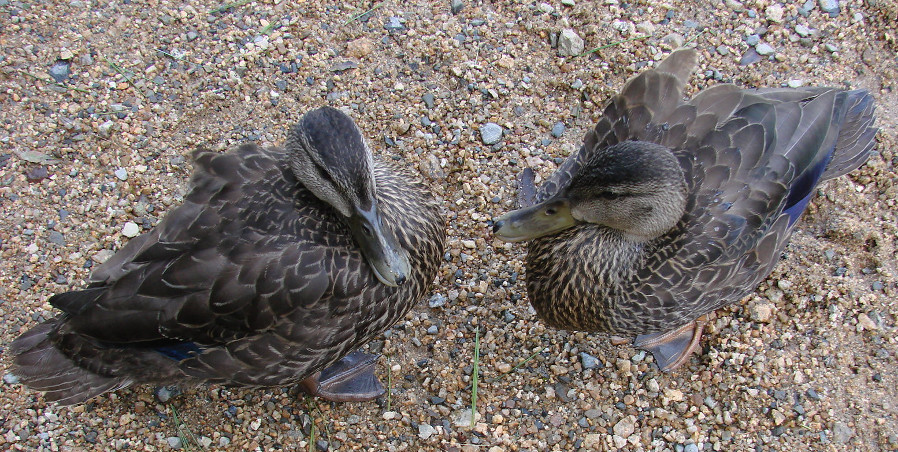
Dabbling
“Dabbling” is characteristic of both Mallards and Black Ducks. It is fun to watch the way they stick their tails in the air so as to feed on the bottom of the lake. Young Black Ducks eat mostly aquatic insects and other invertebrate animals found in lake sediment while adults eat more plant than animal matter.
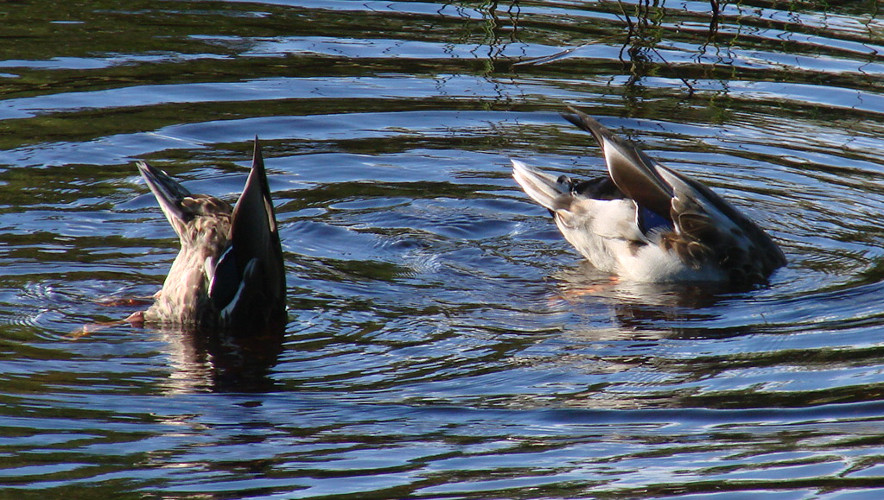
Other birds also feed at Duck Cove
While ducks are the only birds likely to greet a visitor at Duck Cove, some other bird species will also be seen at times. Herring Gulls frequently spend time on the water at Long Lake and small perching birds such as Song Sparrows flit through the shrubs at the lake edge.
Great Blue Herons (Ardea herodias) show up rarely. This large bird does not compete with the ducks for food because Great Blue Herons eat mostly fish and the occasional frog while the ducks dabble for plants and small invertebrates. Herons catch fish by stealth. If you see one, be patient and watch as it slowly moves and seeks its prey!
Notice the difference between the beaks of the heron and the duck! The heron’s sharply pointed beak is good for fishing while the duck’s beak is shovel-shaped for feeding in lake sediments. The beaks of birds show a lot about how animals have become adapted to their particular food sources. If you are interested in birds, pay special attention to their beaks!
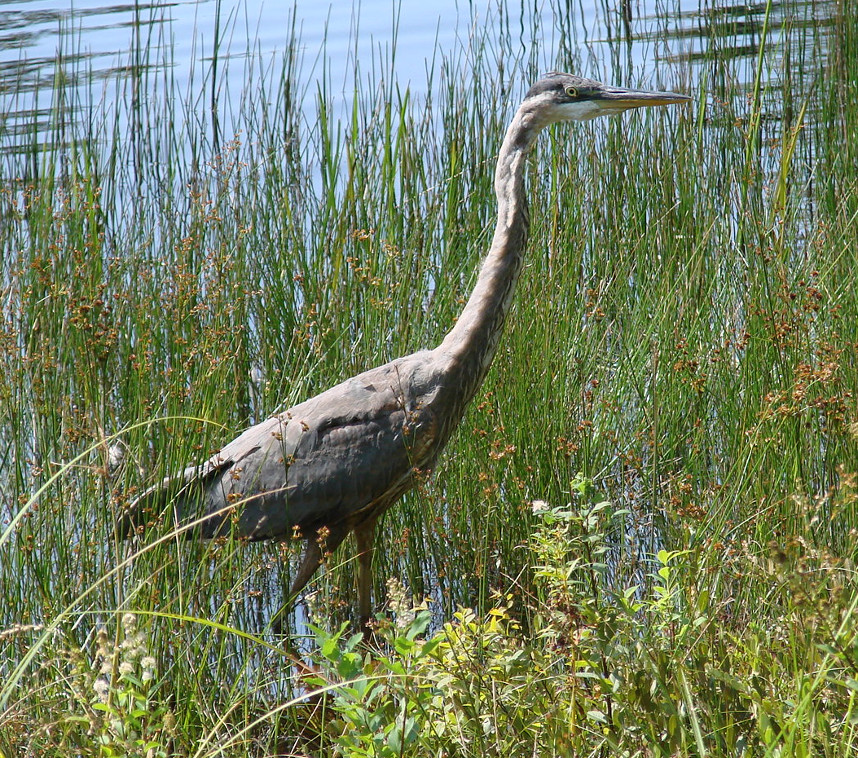

Leave a Reply